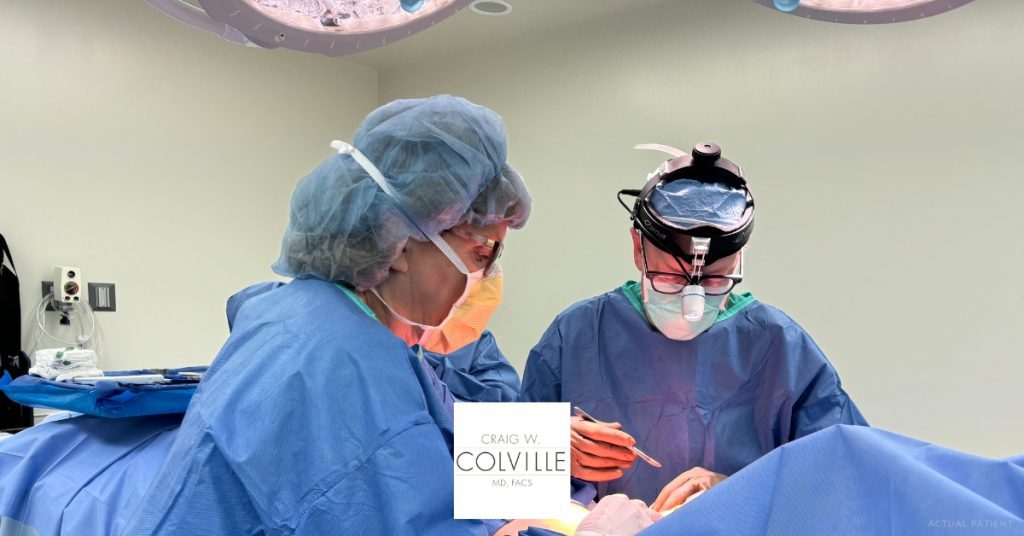Breast implants have come a long way since their inception, with each generation bringing advancements in safety, comfort, and aesthetic results. If you’re considering replacing your implants, understanding these developments may help you make a more informed decision.
So, how often do breast implants need to be replaced? Are today’s implants better than implants from 10 or 20 years ago—and does that mean you should switch them out now? I’m sharing an overview of the evolution of breast implants along with my perspective below to help you better understand the latest revision breast augmentation options.
How Often Should Breast Implants Be Replaced?
While breast implants are not lifetime devices, they also don’t require a set replacement schedule. In fact, I have thousands of patients who are still satisfied with their implants from 20 or more years ago! Rather than subscribing to the belief that implants should be replaced every 10 years or as soon as a new generation of implants is developed, I recommend annual checkups to monitor their condition. We offer HRUS (High-Resolution Ultrasound) in the office for all of our breast augmentation patients. In a matter of minutes, we can examine the breast implant surface for rupture or other issues. It presents a more convenient and less expensive alternative to x-ray or MRI procedures.
Common reasons for implant revision include:
- Age-related changes in breast tissue, size, and shape
- Weight changes
- Changes in aesthetic preferences
- Desire to “downsize” large implants to improve comfort or quality of life
- Implant malposition (e.g., implants sitting too far to the side or too low)
- Capsular contracture (tightening of scar tissue around the implant)
As you consider whether it’s time to replace your implants, it’s helpful to know how today’s implants differ from your own. Let’s look at why and how breast implants have progressed and what the latest generations of implants can offer you.
Why Have Breast Implants Changed Over Time?
Several factors have contributed to the evolution of breast implants, including technological advances and evolving aesthetic preferences. Today, many women prefer to “downsize” their overly large breasts for varying reasons. Their breasts may have gradually gotten bigger after augmentation, or perhaps their current preference leans toward a smaller, more balanced look. Some women even contemplate removing their implants altogether.
To improve safety and satisfy patient demand for customizable breast implant options, manufacturers have answered the call by enhancing the quality and variety of breast implants available today. Some of these changes include improvements to the implant shell, filling, available profile and sizing options, and more.
The Evolution of Breast Implants
Both saline and silicone gel implants were introduced back in the 1960s, each undergoing several changes and improvements over the past 50+ years. We explore some key developments below:
Early Generation Implants
Widely used in the 1990s, third-generation implants filled about 85% of their shell, providing a softer, more natural feel than their predecessors. However, they were more prone to visible rippling, especially in women with thin breast tissue.
Responsive Gel Implants
The release of Allergan’s “responsive gel” implants in 2015 marked a significant improvement for breast augmentation patients, prompting other manufacturers to introduce improved options as well. These “fourth generation” implants boasted a 94% fill rate, offering women several advantages:
- A more cohesive gel with a “gummy” feel
- Improved projection and upper pole retention
- Reduced rippling and wrinkling
Highly Cohesive “Gummy Bear” Implants
Smooth, round “gummy bear” implants became available in 2016, marking another leap forward in breast implant technology. These implants introduced the greatest form stability, making them the gold standard for breast reconstruction implants. They also boasted a more natural look and feel.
Soft Touch Implants
March 2017 saw the introduction of the “Soft Touch” variety of implants. These “fifth generation” implants maintained a 94% fill rate but featured a more cohesive gel, resulting in enhanced upper pole retention and a lower risk of wrinkling and rippling. They quickly became an ideal option for breast augmentation patients, especially those with thinner breast tissues.
The Latest Breast Implant Innovations
In recent years, we have seen a shift toward “dimension-based” implants. Instead of focusing solely on volume, these implants are designed with specific widths and projections to better match a patient’s unique anatomy. This customizable approach allows for:
- More precise matching to chest and breast dimensions
- A range of projection options (low, low plus, medium, high, and ultra-high)
- More balanced body contours
- Personalized, natural-looking results
Ready To Upgrade Your Implants?
With modern breast implant options offering better customization, safety, and aesthetics, many women are opting for revision breast augmentation. If you’re ready for a change, I encourage you to request a consultation online or call our practice at (419) 534-6551. We can discuss whether new implants will help you achieve your ideal look and lifestyle!






I am 66 years old and have had my saline breast implants for 25 years. I have lost over 65 pounds and lost breast tissue which have caused my breast to sag terribly. The implant is under the muscle but the breast is below it. For several months now I have been having an issue with pain in my left breast. It feels like the implant is moving around. I cannot go bra-less at all without having more pain. My Primary Dr. Ordered Mammogram and U.S. to detect any issues. I am not in a situation to afford new breast augmentation on my own but hoping since I’m having pain and issues my Insurance would cover cost. What would you suggest? Thank you.
Hi Barbara,
Thank you for reaching out. We would be happy to help you on your journey. If you would kindly reach out to us at 419-534-6551 we would be happy to assist you.
Sincerely,
Craig Colville, MD